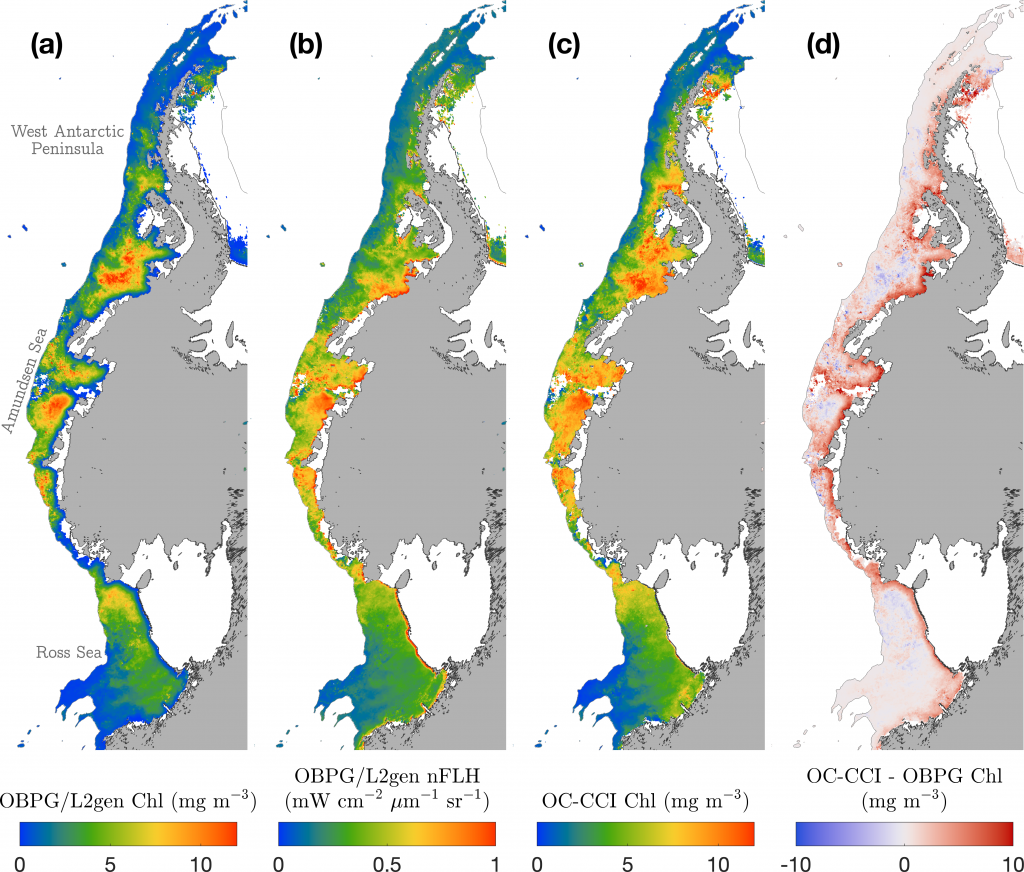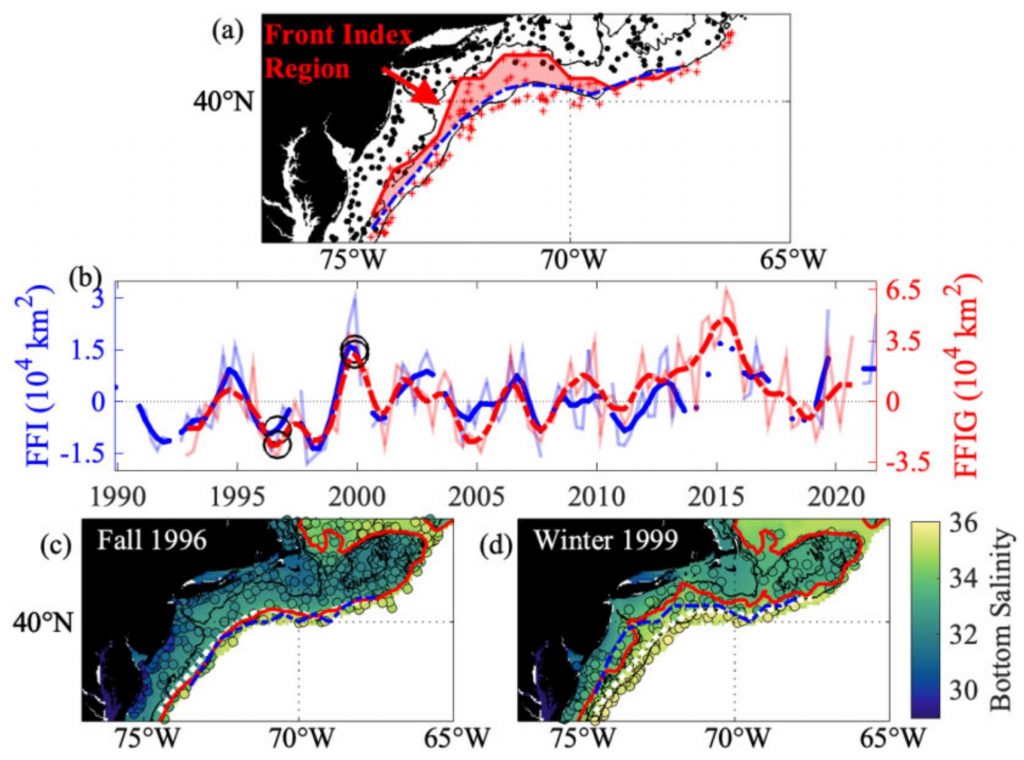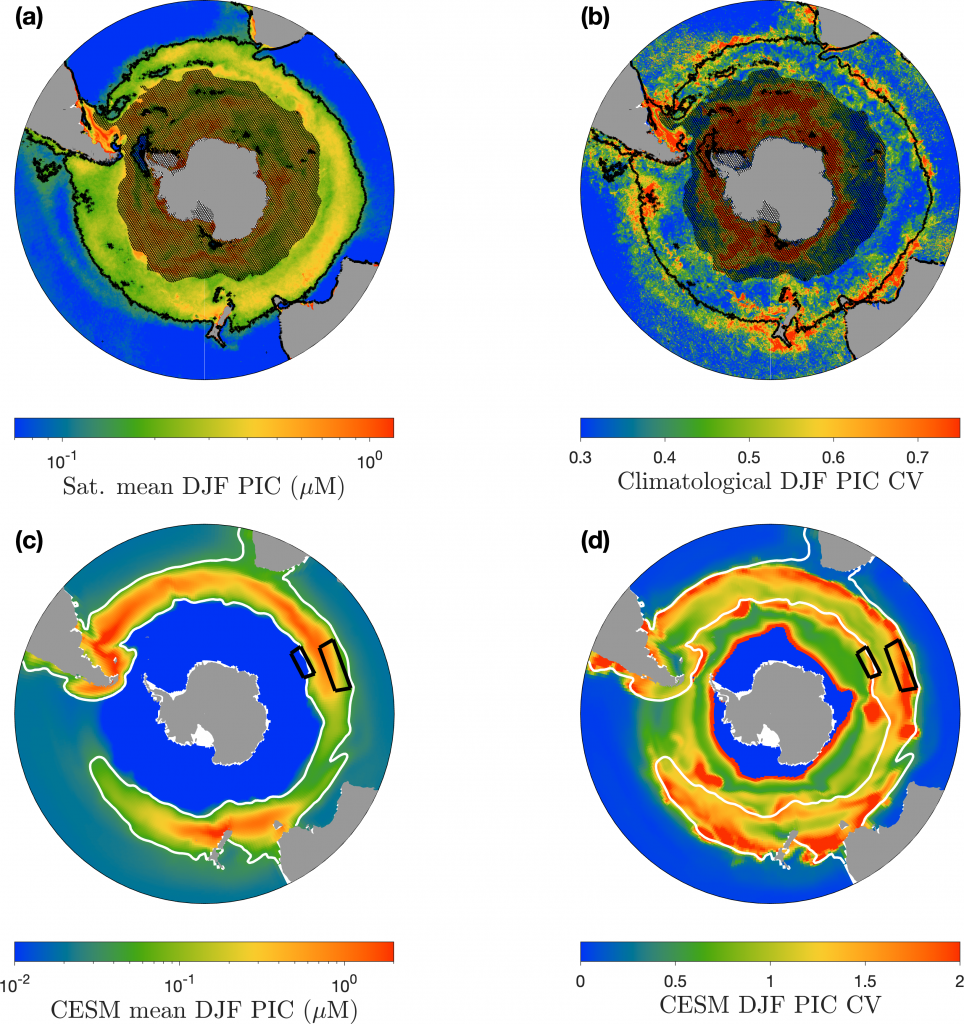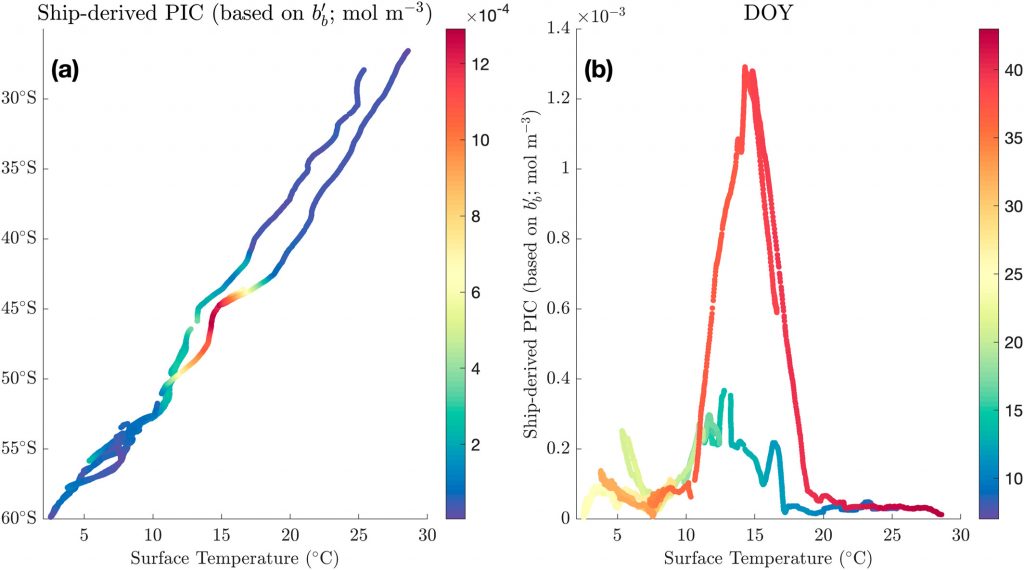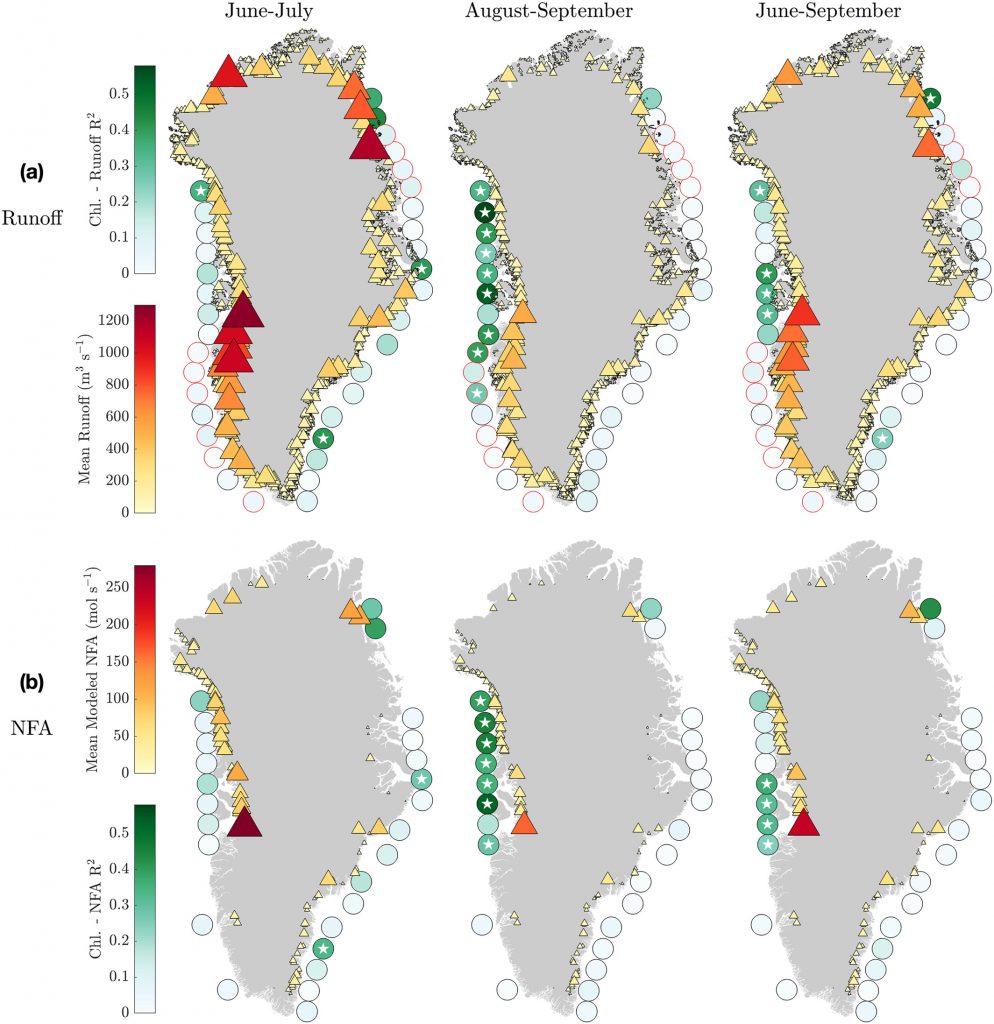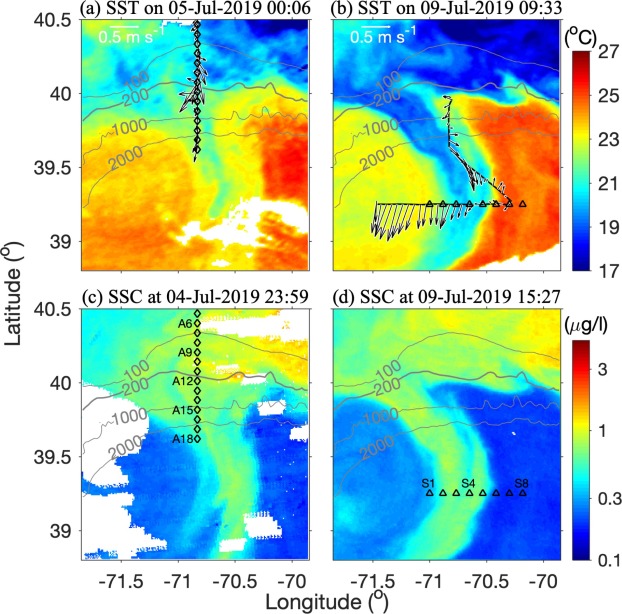New research
Antarctic coastal waters may be more productive than we thought
For years, satellite ocean color measurements have suggested very low productivity near Antarctica’s icy coastlines, which is surprising as Antarctic coastal polynyas (areas of open water surrounded by sea ice) are known hotspots for marine life. In this new paper, we show that we’ve been dramatically underestimating chlorophyll in these crucial ecosystems, with most coastal…
Read MoreForecasting ocean front movements for fisheries management
Adrienne Silver, a former WHOI postdoc working with Glen Gawarkiewicz and me, recently published her first postdoc paper in ICES Journal of Marine Science, which describes an index to forecast the movements the foot of the New England shelfbreak front. Congratulations Adrienne! Why the front matters: The shelfbreak front in the Northern Middle Atlantic Bight…
Read MoreModeling Southern Ocean PIC? Contrasting temperature-growth curves for coccolithophores and their grazers is key! (New paper)
Coccolithophores, unicellular calcifying phytoplankton, grow in a region spanning the entire Southern Ocean termed the “Great Calcite Belt” (GCB). Particulate inorganic carbon (PIC) is generated through the process of coccolithophore calcification, and the GCB is thought to host over a quarter of globally suspended PIC. Sensitive to changes in temperature and ocean alkalinity, coccolithophore growth…
Read MoreCoccolithophore growth dynamics in the Pacific Sector of the Southern Ocean
In our new paper “Environmental Drivers of Coccolithophore Growth in the Pacific Sector of the Southern Ocean” we use both observations (shipboard and remote sensing) in combinations with simple growth models (parameterized using CESM/MARBL) to understand what are the major driving factors controlling calcification in the Subantarctic Zone, particularly far from any sedimentary sources. This…
Read MoreThe local biogeochemical impacts of Greenland subglacial discharge
Much of Greenland runoff is delivered to the coastal ocean at marine-terminating glaciers, potentially hundreds of meters below the sea surface. The resulting turbulent buoyant plumes can entrain nurtrient-rich deeper waters, potentially delivering these nutrients to the upper water column which can support elevated primary productivity. The importance of this buoyant plume-productivity effect around Greenland…
Read MoreNew SPIROPA paper on shelf-water streamers out in Progress in Oceanography
Our new SPIROPA paper led by Gordon Zhang on cross-shelf tracer exchange by a streamer of shelf water on the eastern periphery of a warm-core ring in the Middle Atlantic Bight has been published in Progress in Oceanography! Find the paper here: https://doi.org/10.1016/j.pocean.2022.102931
Read MoreBuoyant Plume Dynamics Across Greenland
Check out our new paper characterizing buoyant plume dynamics across Greenland, led by Donald Slater “Characteristic depths, fluxes, and timescales for Greenland’s tidewater glacier fjords from subglacial discharge-driven upwelling during summer”. Watch Donald’s IGS seminar on this work here. (Article PDF)
Read MoreWhat drives surface chlorophyll enhancement detected at the New England Shelfbreak?
Our new SPIROPA paper is now out in JGR: “Ephemeral surface chlorophyll enhancement at the New England shelf break driven by Ekman restratification”.
Read More